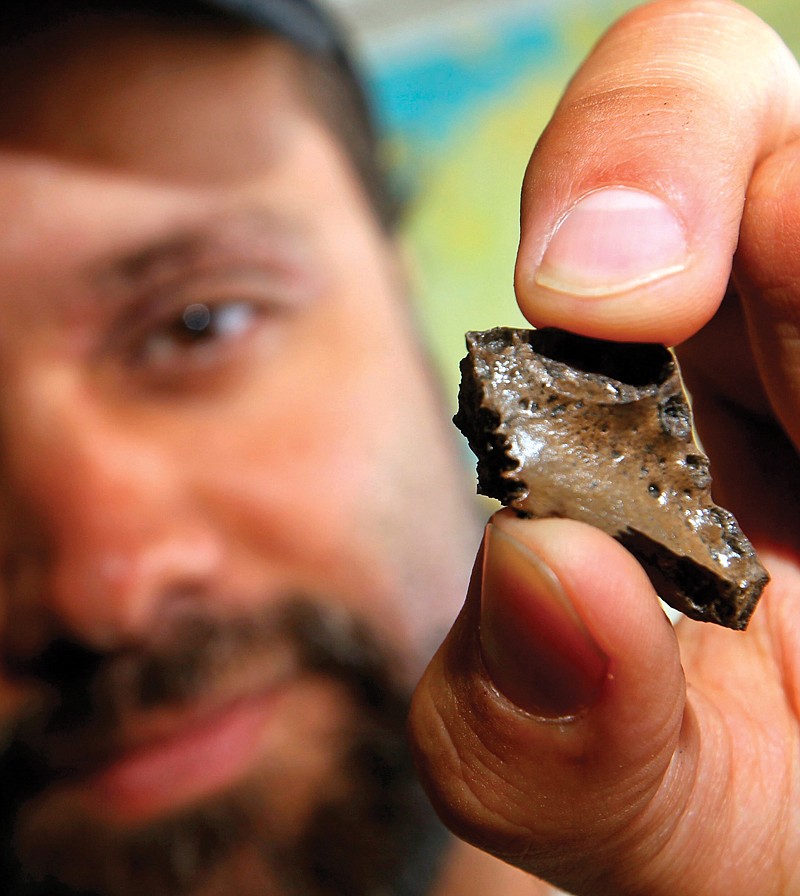ARLINGTON, Texas-Some 96 million years ago, a peninsula jutted through the swamp that was the Dallas-Fort Worth area, a swath of land alive with primitive creatures.
The Fort Worth Star-Telegram reports the land stretched through what is now Arlington and the Mid-Cities and was home to dinosaurs, turtles and a 20-foot-long dinosaur-eating crocodile, among other animals.
Because most of North America's middle was underwater during that period, that land today holds a precious resource. It fills a gap in what we know, illuminating a part of the fossil record that had been dark.
"It's very rare to have the amount of material preserved as well it is," said Christopher R. Noto, an associate professor of biological sciences at the University of Wisconsin-Parkside. "It's rare anywhere. A lot of places you only find bits and pieces-or maybe, if you're lucky, a single skeleton-but to have an entire ecosystem in one place is a very rare opportunity. It's a glimpse into the past."
Known as the Arlington Archosaur Site, it lies in the same Virdian neighborhood where developers are working to preserve the undeveloped land that was home to the historic Bird's Fort, the first organized white settlement in Tarrant County. Archosaurs are defined as a subclass of reptiles that includes dinosaurs, pterosaurs and crocodiles.
Named after teenager Austin Motheral, who found the bones while digging at the Arlington site, the 20-foot-long croc-Deltasuchus motherali-is the most-well known find so far. Like crocodiles today, it would chomp on dinosaurs and other creatures as they came close to the water's edge.
Discovered in 2003, the site was initially overseen by UTA graduate student Derek Main. Because UTA didn't have the ability to store and study all of the fossils, the Perot Museum of Nature and Science in Dallas eventually took over administration of the site in 2013.
That same year, Main died unexpectedly and Noto took over, traveling down several times a year from Wisconsin.
Excavations at the archosaur site take place two Saturdays a month from late winter to fall if the weather permits.
Under the Perot's stewardship, the fossils are stored and studied.
Deep in the bowels of the Perot's Fair Park building, the fossils from the Cretaceous Period are stored in a series of locked drawers.
The digging has uncovered a landscape full of salamanders, frogs and lizards as well as both predatory dinosaurs and plant-eating dinosaurs, said Ronald S. Tykoski, director of the Perot Museum's Paleontology Lab. Like Noto, he said, it's an unusually rich site for this part of North America.
"We have lots and lots of marine rocks," Tykoski said. "Everything west of Arlington and everything east of Arlington is all marine, so we've got a wonderful marine record.
"It's that terrestrial record. What was happening on land here in North America at this point in time 95, 96, 97 million years in age?"
While the Arlington site has a lot of variety, it will probably be remembered for its abundance of crocodiles.
"This was really the land of crocodiles more than the land of dinosaurs," Tykoski said.
Since the fossils were found, the Perot museum has documented more than 2,000 specimens, and there are still plenty left to study. But the research takes time.
"We get this stuff out and we learn about it," Tykoski said. "Then we get it in a condition where we can study it and we ask, 'What does it tell us about life in the past?'
"Now that it is slowly being surrounded by the 2,000-acre master-planned Viridian neighborhood, Tykoski isn't sure how much longer the site will continue to yield prized fossils.
But he said the stretch of Woodbine formation where these fossils were found will offer up more discoveries.
"I can't wait to get the next phone call that somebody has found something," Tykoski said.
Viridian's plans include building a small museum or interpretive center to honor both Bird's Fort and the archosaur site.
"I think it would be great to have a rotating display and have different things in there," said Arlington Mayor Jeff Williams.
While decisions about lending fossils to others aren't made by him, Tykoski said the Perot Museum tries to act as a resource for the community. So he doesn't see any reason fossils couldn't be part of an interpretive center.
"Why not?" Tykoski said. "It wouldn't be terribly difficult."
Information from: Fort Worth Star-Telegram, http://www.star-telegram.com
This is an AP Weekend Member Exchange shared by the Fort Worth Star-Telegram

